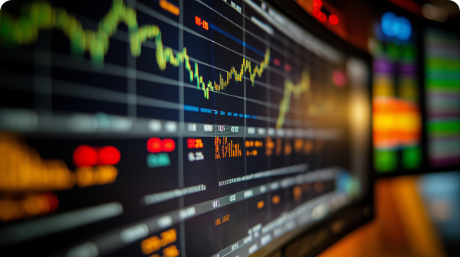Announcement: Lorem ipsum dolor sit amet, consectetur adipiscing elit. Donec et quam blandit odio sodales pharetra.
RBI has prepared the markets for a series of rate hikes in 2022
It is said that when it comes to the RBI decisions on rates, it is not just the rate decision, but also the language matters. RBI appears to be preparing markets for a series of rate hikes in the year 2022.

Table of Contents
Rising inflation is the issue
Like in the US, consumer inflation has been relentless in India. From 6.95% in Mar-22, inflation has spiked to 7.79% in Apr-22. Most of this is food and core inflation that is pushing up the headline inflation number. But the moral of the story is that the RBI can no longer stay sanguine about rising prices. It has to be met head on; with clear anti-inflation policies. This is a process that the RBI has already commenced with its 40 bps rate hike in a special MPC in Mar-22.
Growth, take a back seat
The good news is that RBI is focused on inflation. The bad news is that growth is no longer a priority, at least at this point of time. Inflation at 7.79% and core inflation at an 8-year high of 7.24% are triggers for the RBI to go aggressive on rate hikes. If you look at the latest IIP growth numbers, one inference that can be drawn is that finally the economy is seeing growth over pre-COVID levels. Also, the sharp spike in high frequency MOM growth indicates that the problems like the Ukraine war and China lockdown have been taken in the stride. That will give the RBI lot of comfort when taking on inflation in an aggressive fashion.
Managing the narrative
One of the basic rules in market is that volatility is rarely caused by decisions. Rather, it is caused by the gap between perception and reality. That is why, in the realm of monetary policy, it is very important that the narrative is managed extremely well. For example, the US Fed is very particular that it prepares the financial markets well in advance ahead of critical decision shifts. This ensures a smooth transition. That is something the RBI has also done quite effectively this time around. While the unscheduled rate hike of 40 bps may have taken the markets by surprise, it surely prepares them for a more hawkish RBI approach.
Now for the tougher part!
To the credit of the RBI , it has properly prepared the markets for more hawkish approach. However, the real challenge is in managing the downstream risks to growth. In the US, economists like Larry Summers have already warned of likely recession in growth due to the rate hikes. That is still uncharted territory for Indian markets. However, India runs a different kind of risk amidst rising rates. The last time the RBI embarked on rate hikes in 2018, the tightness in money markets caused the bankruptcy of ILFS and DHFL. This time it is more about reversing the COVID rate cuts and there is still a leeway of 75 bps for the RBI. The question is what happens if the RBI has to hike rates beyond that point! ©
Comments